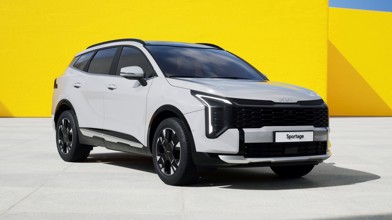Prices rise, sales plummet - except for luxury brands
Russia’s vehicle market is in freefall. As financial turmoil makes cars more expensive by the day, demand for many brands has almost evaporated.
Sales fell 38 per cent in the year to February, with mid-market brands like Ford plummeting 78 per cent, eating into earnings and threatening production.
Only luxury cars are still holding up as richer Russians count on them as status symbols — even if that means cutting back on other aspects of life.
“Russians can allow themselves to rent a room in a shared flat on the fifth floor of a Khrushchev-era apartment building, live very poorly, but still drive an Audi,” said Tatiana Lukavetskaya, chief executive of Rolf, a major car dealer in Moscow and St Petersburg.
“That’s because everyone sees how I drive, but no one sees how I live.”
While sales for Chevrolet were down 74 per cent in February and General Motors-Opel nosedived 86 per cent, Mercedes-Benz, Lexus and BMW have risen. Audi fell, but by less than the market as a whole.
For Russian car buyers, the financial pain is twofold. Prices have risen as the plunging value of the ruble has made imports more expensive — even cars made in Russia use many imported parts. Meanwhile, banks are unwilling to lend to prospective car buyers at anything but punitive rates.
“Even if the bank gives its approval to the loan, the rate starts somewhere around 20 per cent,” says Andrei Toptun, chief analyst at research firm Autostat.
Russia’s car sales statistics, already poor, are being propped up artificially, he claims.
The weak value of the ruble means businessmen from neighbouring ex-Soviet states buy cars in Russia for use in Belarus or Central Asia, Toptun says.
“Consumers come to Russia from Kazakhstan, buy a car and send it back home to Kazakhstan.” With those exports taken out of the equation, Toptun estimates Russia’s car sales fell more by more than half in February.
Many of the most popular US and European brands rushed to open factories in Russia over the past 15 years, with local plants offering a way to avoid onerous Russian import duties and exploit a then-growing market.
The operations are not a big part of the companies’ sales — only 2 per cent of GM’s annual 9.9 million sales last year, or 1 per cent of Ford’s 6.3 million.
But the trouble downgrades a potentially lucrative market they had been hoping to develop.
Now those firms are left sitting on overcapacity and, in some cases, potentially damaging labour disputes.
At Ford’s flagship Russian factory in St Petersburg, the crashing market is threatening jobs and straining labour relations, according to local union boss Igor Temchenko, who said workers were preparing to strike for an indefinite period.
That is rare in Russia, where many unions are poorly organised or pressured by politicians not to rock the boat.
Ford has opted to limit its pain by cutting production and raising prices. Its sales were down 78 per cent in February, according to figures from the Moscow-based Association of European Businesses.
That is the opposite path to that taken by South Korean sister brands Hyundai and Kia, who have limited price rises and eaten up market share.
Together, they now sell more cars in Russia than even Soviet-era giant Lada, the traditional No1.


